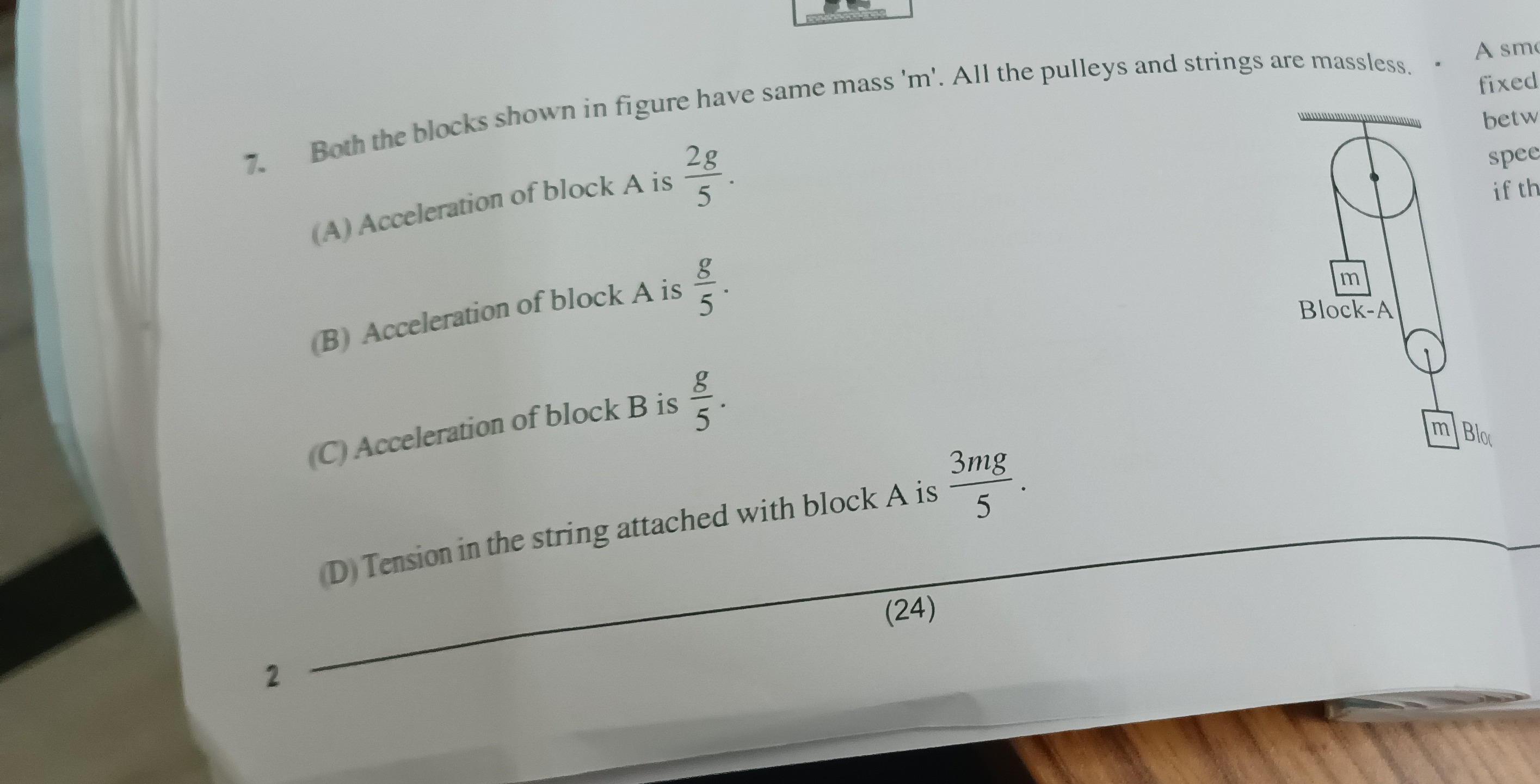Question
Question: Both the blocks shown in figure have same mass 'm'. All the pulleys and strings are massless....
Both the blocks shown in figure have same mass 'm'. All the pulleys and strings are massless.

Acceleration of block A is 52g.
Acceleration of block A is 5g.
Acceleration of block B is 5g.
Tension in the string attached with block A is 53mg.
Acceleration of block A is 52g, Acceleration of block B is 5g, Tension in the string attached with block A is 53mg.
Solution
Let aA be the downward acceleration of block A and aB be the downward acceleration of block B. Let T be the tension in the string.
Equation of motion for block A: mg−T=maA.
Equation of motion for block B: mg−2T=maB.
Kinematic constraint: aA+2aB=0, so aA=−2aB.
Let aB′=−aB be the upward acceleration of block B. Then aA=2aB′.
Substitute aB=−aB′ and aA=2aB′ into the equations of motion:
mg−T=m(2aB′)
mg−2T=m(−aB′)
From the first equation: T=mg−2maB′.
Substitute into the second equation: mg−2(mg−2maB′)=−maB′
mg−2mg+4maB′=−maB′
−mg=−5maB′
aB′=5g.
So, upward acceleration of block B is 5g.
Downward acceleration of block A is aA=2aB′=2(5g)=52g.
Tension T=mg−2maB′=mg−2m(5g)=mg−52mg=53mg.
Checking the options:
(A) Acceleration of block A is 52g. This is the magnitude of acceleration of A, and also the downward acceleration. Correct.
(C) Acceleration of block B is 5g. This is the magnitude of acceleration of B, and also the upward acceleration. Correct.
(D) Tension in the string attached with block A is 53mg. This is correct.
